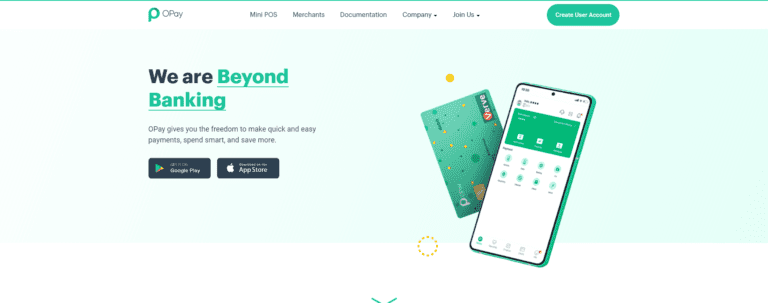How to Post a New Job on LinkedIn
LinkedIn has become a powerhouse for professional networking and recruitment, making it an essential platform for posting job opportunities. Whether you’re a hiring manager or a small business owner, leveraging LinkedIn to find the right talent is a smart move. In this step-by-step guide, we’ll walk you through the process of posting a new job on LinkedIn, ensuring that you attract the best candidates for your position.
1. Log in to Your LinkedIn Account
Open your preferred web browser and navigate to the LinkedIn website (www.linkedin.com).
- If you already have a LinkedIn account, enter your email address or phone number associated with the account and then input your password. Click on the “Sign In” button to access your account.
- In case you don’t have a LinkedIn account, click on the “Join now” button to create one. Follow the prompts to provide the necessary information, including your name, email address, password, and other relevant details. Complete the account creation process by verifying your email or phone number.
- After successfully logging in or creating a new account, you will be directed to your LinkedIn homepage.
- Take a moment to ensure that your profile information is up-to-date, as a well-maintained profile can enhance your company’s credibility and attract more qualified candidates.
- Once you’ve logged in and verified your profile, navigate to the top navigation bar and click on the “Jobs” tab. This will take you to the Jobs dashboard, where you can begin the process of posting a new job on LinkedIn.
2. Navigate to the Jobs Dashboard
After logging in to your LinkedIn account, direct your attention to the top navigation bar on the LinkedIn homepage.
- Locate and click on the “Jobs” tab. This tab is typically positioned between the “Home” and “Network” tabs.
- Upon clicking the “Jobs” tab, you’ll be taken to the LinkedIn Jobs dashboard. Here, you’ll find a comprehensive overview of the current job market, suggested job openings, and a search bar to explore specific positions.
- To proceed with posting a new job, look for the “Post a Job” button on the Jobs dashboard. This button is usually prominently displayed and might be labeled as “Post a Job for Free” or a similar variation.
- Clicking on the “Post a Job” button will initiate the job posting process, guiding you through the necessary steps to create and publish your job listing on LinkedIn.
- Familiarize yourself with the various options available on the Jobs dashboard, such as filters to refine job searches, recommended jobs based on your company’s industry, and insights into the current job market trends. These features can provide valuable information as you navigate through the process of posting your job on LinkedIn.
- As you explore the Jobs dashboard, consider leveraging LinkedIn’s resources, such as articles and tips on optimizing job posts, to enhance the visibility and effectiveness of your job listing.
If you encounter any difficulties or have questions about the job posting process, LinkedIn’s Help Center, accessible through the top navigation bar, offers comprehensive guidance and support.
Keep in mind that the Jobs dashboard is a dynamic space, with features and layouts subject to updates. Ensure that you’re using the most current version of LinkedIn to access the full range of tools available for posting and managing job listings.
With the Jobs dashboard now open and the “Post a Job” button in sight, you’re ready to move on to the next steps in effectively posting your new job on LinkedIn.
3. Choose Your Job Posting Type
Once you have accessed the Jobs dashboard and clicked on the “Post a Job” button, you’ll be prompted to choose the type of job posting that best suits your hiring needs.
LinkedIn offers various job posting options tailored to accommodate different recruitment strategies. You may be presented with choices such as “Single Job Post,” “Job Slots,” or other variations based on the features available at the time.
If you’re looking to fill a specific position with a one-time posting, selecting the “Single Job Post” option is ideal. This allows you to create a dedicated listing for a single vacancy, providing detailed information about the role and its requirements.
Alternatively, if you anticipate having multiple job openings within a given timeframe, you may opt for “Job Slots.” This feature allows you to post and manage multiple job listings over a set period, streamlining the hiring process for ongoing recruitment needs.
Consider your company’s hiring goals, budget, and the frequency of job openings when choosing the appropriate posting type. LinkedIn often provides clear pricing information and package details to help you make an informed decision.
Depending on the specific needs of your recruitment strategy, explore any additional features that may accompany each posting type, such as enhanced visibility, candidate tracking tools, or other perks designed to optimize your hiring efforts.
As you proceed, you may also have the option to upgrade your job post for increased visibility or to access additional candidate insights. Evaluate these options based on your budget and the level of exposure you desire for your job listing.
Keep in mind that LinkedIn’s interface is user-friendly, and tooltips or information icons are often available to provide further clarification on each option. Take the time to review these details to ensure you make choices aligned with your recruitment objectives.
Once you’ve selected the most suitable job posting type for your needs, you’ll be ready to move on to the next steps in the job posting process, where you’ll input specific details about the job and craft a compelling listing to attract top-tier talent to your organization.
4. Enter Job Details
With your job posting type selected, the next crucial step is to enter detailed information about the job you’re looking to fill. This section allows you to provide potential candidates with a comprehensive overview of the position and your company.
- Begin by entering the job title, ensuring that it accurately reflects the role’s responsibilities and level within your organization. A clear and concise job title increases the likelihood of attracting qualified candidates.
- Specify the location of the job. This can be a city, state, or region, depending on the scope of your recruitment. Accurate location details help candidates assess whether the position aligns with their geographic preferences.
- Provide information about your company, including the name, industry, and a brief description. Highlighting key aspects of your organization’s culture and values can make your job post more appealing to potential candidates.
- Craft a compelling job description that outlines the responsibilities and expectations of the role. Be specific about the qualifications, skills, and experience required, but also emphasize the unique aspects that make your company an attractive place to work.
- Utilize bullet points or concise paragraphs to enhance readability. A well-structured job description is more likely to capture the attention of qualified candidates.
- Consider incorporating information about your company’s mission, values, and any notable achievements. This can provide candidates with a deeper understanding of your organization and its commitment to employee success.
- Highlight any perks or benefits associated with the position, such as competitive salary, flexible work arrangements, professional development opportunities, or other enticing offerings.
- If applicable, include details about the application process, including any specific documents or information you require from candidates. Providing clarity on this front streamlines the application process for both you and potential applicants.
- Take advantage of LinkedIn’s formatting options, such as bold text or headers, to emphasize key points in your job description. This not only enhances readability but also ensures that crucial details stand out to prospective candidates.
- Regularly review your job details to ensure accuracy and relevancy. An up-to-date and well-crafted job listing is more likely to attract high-quality applicants who align with your organization’s needs and values.
With the job details entered and thoroughly reviewed, you’re now ready to proceed to the next sections of the job posting process, where you’ll set application settings and further refine your job listing to optimize its visibility on LinkedIn.
5. Set Application Settings
After crafting a compelling job description, the next crucial step in posting a new job on LinkedIn is to set application settings. This section determines how potential candidates will apply for the position and streamlines the process for both applicants and recruiters.
- Choose the preferred method of application. LinkedIn provides several options, including applying directly on the platform, redirecting candidates to an external website, or receiving applications via email.
- Opting for direct applications on LinkedIn allows candidates to submit their profiles and relevant documents seamlessly through the platform. This is a convenient option that simplifies the application process for candidates while centralizing the submissions for easy access and review.
- If you prefer candidates to apply through an external website, you can input the URL where applicants can find more details and submit their applications. Ensure that the external application process is user-friendly and aligns with the candidate experience you aim to provide.
- Alternatively, you may choose to receive applications via email. In this case, clearly specify the email address applicants should use, and ensure that the instructions for submission are concise and easy to follow.
- As part of the application settings, you may also have the option to enable or disable features such as the “Easy Apply” button, which allows candidates to submit their LinkedIn profiles with a single click. Evaluate whether this feature aligns with your recruitment strategy and the specific requirements of the position.
- Consider the level of confidentiality you require for applications. LinkedIn allows you to choose whether the applications are visible to everyone on the platform or only to designated individuals within your organization. This is particularly relevant if your hiring process involves sensitive or confidential information.
- Think strategically about the screening questions you may want to include in the application process. These questions can help filter out applicants who may not meet essential criteria, saving you time during the initial review process.
- Test the application process from the candidate’s perspective to ensure a smooth and user-friendly experience. This step is crucial in optimizing your job posting for a diverse pool of applicants.
By setting thoughtful application preferences, you enhance the efficiency of your recruitment process and make it more accessible to a broader range of qualified candidates. With application settings configured, you’re now prepared to advance to the subsequent steps, where you can add screening questions and further customize your job post on LinkedIn.
6. Add Screening Questions
As you progress through the job posting process on LinkedIn, adding screening questions is a strategic step to refine your candidate pool and gather specific information that aligns with your hiring criteria.
LinkedIn allows you to create customized screening questions tailored to the requirements of the position. These questions serve as an initial filter, helping you identify candidates who possess the essential skills, qualifications, and experiences necessary for the role.
- Consider the key competencies and attributes crucial for success in the position. Craft screening questions that directly address these aspects, ensuring that applicants’ responses provide meaningful insights into their suitability for the role.
- Keep the number of screening questions manageable to encourage a higher applicant response rate. Aim for a balance between gathering essential information and maintaining a streamlined application process.
- Utilize a mix of question formats, including multiple-choice, yes/no, and open-ended questions. This diversity allows you to extract different types of information, providing a more comprehensive understanding of candidates’ qualifications.
- Be mindful of the legal and ethical considerations when formulating screening questions. Avoid queries that may be perceived as discriminatory or unrelated to the job requirements to ensure fair and inclusive hiring practices.
- Communicate the purpose of each screening question to applicants. Providing context helps candidates understand the relevance of their responses and encourages more thoughtful and accurate answers.
- Leverage screening questions to gauge candidates’ enthusiasm for the role and their knowledge of your company. This insight can be valuable in identifying individuals who align not only with the job requirements but also with your organization’s values and goals.
- Test the screening questions internally to ensure they effectively capture the desired information without being ambiguous or confusing. This step helps refine the questions before they are presented to applicants.
- Regularly review and update screening questions based on evolving hiring needs. As your understanding of the ideal candidate profile deepens, adjusting screening questions ensures that your recruitment process remains aligned with your organization’s goals.
By incorporating thoughtful screening questions into your LinkedIn job post, you enhance the efficiency of your candidate evaluation process. This proactive approach streamlines the initial selection phase, enabling you to focus on candidates who closely match the requirements of the position. With screening questions in place, you’re now ready to proceed to the subsequent sections, where you can set the budget and duration for your job post on LinkedIn.
7. Set Budget and Duration
After fine-tuning the details of your job post and incorporating screening questions, the next critical step in the process of posting a job on LinkedIn is to set the budget and duration for your listing.
LinkedIn offers various budgeting options to accommodate different business sizes and hiring needs. Evaluate the pricing plans available and select the one that aligns with your recruitment budget. Consider factors such as the level of visibility you desire and the number of potential candidates you aim to reach.
- Assess the duration for which you want your job post to be active on LinkedIn. The platform provides flexibility in choosing the posting duration, allowing you to tailor it to the urgency of your hiring needs and the expected timeline for filling the position.
- Take advantage of LinkedIn’s analytics and insights to make informed decisions about your budget and posting duration. These tools provide data on the performance of your job post, helping you gauge its effectiveness in reaching and engaging potential candidates.
- LinkedIn may offer additional features and upgrades at this stage, such as promoting your job post to a wider audience or providing enhanced visibility to specific demographics. Evaluate these options based on your recruitment goals and budget constraints.
- Review the terms and conditions associated with your chosen budget and duration carefully. Ensure that you understand the pricing structure, any potential additional charges, and the renewal process if applicable.
- Consider experimenting with different budgeting strategies and posting durations to optimize the performance of your job listing. LinkedIn’s platform is dynamic, and adjustments can be made based on the evolving needs of your recruitment campaign.
- If you are working within a specific hiring season or have a targeted recruitment timeline, align the duration of your job post accordingly. This strategic approach ensures that your listing remains active during critical periods of candidate engagement.
- Leverage LinkedIn’s expertise by exploring any guidance or best practices provided during the budgeting and duration setup. LinkedIn often shares insights on maximizing the impact of your job post, drawing on its extensive data and experience in the recruitment space.
With your budget and duration parameters set, you’re now ready to move forward in the job posting process. The next steps will involve reviewing and editing your job post, making the final payment, and potentially exploring additional promotional opportunities to boost the visibility of your job listing on LinkedIn.
8. Preview and Edit
Once you’ve established your budget and duration, the penultimate step in the process of posting a job on LinkedIn involves reviewing and editing your job post. This step is crucial to ensure accuracy, clarity, and an overall compelling presentation of your job opportunity.
- Click on the “Preview” or “Review” option, depending on LinkedIn’s interface at the time. This will allow you to see how your job post will appear to potential candidates before it goes live.
- Thoroughly review all the information you’ve entered, including the job title, location, company details, job description, screening questions, and application settings. Pay close attention to spelling, grammar, and formatting to maintain a professional and polished presentation.
- Consider the visual appeal of your job post. LinkedIn allows for the inclusion of images or your company logo, which can enhance the attractiveness of your listing. Ensure that any visual elements are clear, and relevant, and contribute positively to your employer brand.
- Evaluate the overall flow and coherence of your job description. A well-structured and engaging job post is more likely to capture the attention of potential candidates and encourage them to apply.
- Verify that all links, whether directing candidates to an external website or email application, are functioning correctly. This ensures a seamless application process for candidates and minimizes the risk of technical issues.
- If any changes are needed, use the editing options provided by LinkedIn to make adjustments. Take this opportunity to fine-tune your job post based on the preview, ensuring that it aligns with your recruitment objectives and showcases your company in the best possible light.
- Seek input from colleagues or team members during the review process. Fresh perspectives can identify areas for improvement and contribute to a more comprehensive and compelling job post.
- Check that your screening questions are clear and relevant. Confirm that the questions effectively filter candidates based on the essential criteria for the position without creating unnecessary barriers to application.
- Utilize the preview stage to gauge the overall impact of your job post. Consider how it stands out among other listings and whether it effectively communicates the unique selling points of your job opportunity.
- Regularly revisit and update your job posts, especially if the recruitment landscape evolves or if you receive feedback on the effectiveness of your listings. Keeping your job posts current and engaging contributes to ongoing success in attracting top talent.
With the final review completed, and any necessary edits made, you’re now ready to proceed to the payment section. This is the last step before your job post goes live on LinkedIn, reaching a vast pool of potential candidates and bringing you one step closer to finding the ideal candidate for your position.
9. Make Payment
As you’ve meticulously reviewed and fine-tuned your job post, the next crucial step in the process of posting a job on LinkedIn involves making the payment to finalize and publish your listing.
- Click on the “Next” or “Continue to Payment” button, depending on the interface design. This will direct you to the payment section where you can select your preferred payment method.
- LinkedIn typically offers various payment options, including credit/debit cards and other electronic payment methods. Choose the option that best suits your preferences and the organization’s financial processes.
- Input the required payment details, including the card number, expiration date, and security code. Ensure that the billing information is accurate to avoid any payment processing issues.
- Review the pricing details displayed on the payment page. Confirm that the charges align with the budget you’ve set for your job posting. LinkedIn often provides a summary of the selected posting type, duration, and any additional features you may have chosen.
- If you have a promotional code or discount, enter it in the designated field to avail any applicable benefits. LinkedIn occasionally offers promotions or discounts, so take advantage of these opportunities to optimize your recruitment budget.
- Double-check the terms and conditions associated with your payment. Ensure that you understand any refund policies, renewal procedures, or other relevant information before proceeding.
- Once you’ve verified all the details and are satisfied with the payment information, click on the “Submit” or “Confirm Payment” button to initiate the payment process.
- LinkedIn’s secure payment gateway will process your transaction. Be patient, as this may take a moment. Upon successful payment, you’ll receive a confirmation notification, and your job post will officially be live on the LinkedIn platform.
- After making the payment, consider exploring any post-purchase features or resources LinkedIn may offer. This could include insights into your job post’s performance, tips for attracting more candidates, or additional tools to optimize your recruitment strategy.
- Keep a record of your payment confirmation for your records. This documentation may be useful for expense tracking, budget reconciliation, or any future inquiries related to your job posting.
With the payment successfully processed, your job post is now visible to LinkedIn’s extensive network of professionals, increasing the likelihood of attracting qualified candidates to apply for your position. The final steps involve monitoring your job post’s performance and potential applicants, allowing you to actively manage the recruitment process on LinkedIn.
10. Promote Your Job Post (Optional)
While your job post is now live on LinkedIn, the platform offers additional options to boost its visibility and reach a broader audience through promotional features. This optional step in the job posting process allows you to maximize the impact of your listing and increase the chances of attracting top-notch candidates.
- Explore LinkedIn’s promotional features, such as sponsored content or sponsored InMail, which can amplify the visibility of your job post beyond your immediate network. Sponsored content appears in the LinkedIn feed of targeted professionals, increasing the exposure of your job opportunity to a wider audience.
- Consider leveraging LinkedIn’s targeted advertising tools to reach specific demographics or professionals with certain skills. This can be particularly useful if you have niche or specialized roles that require a unique set of qualifications.
- Set a promotional budget based on your recruitment goals. LinkedIn’s advertising platform typically allows you to allocate a daily or overall budget, giving you control over your promotional spending.
- Define the target audience for your promoted job post. LinkedIn offers precise targeting options based on factors such as location, industry, job function, and more. Tailor your audience criteria to ensure your job post reaches professionals who are most likely to be interested in the opportunity.
- Craft compelling ad copy and visuals for your promoted job post. Highlight key selling points of the position and your company culture to entice potential candidates. A well-designed and persuasive promotion can significantly enhance the impact of your job listing.
- Monitor the performance of your promoted job post through LinkedIn’s analytics tools. Track metrics such as impressions, clicks, and applicant actions to assess the effectiveness of your promotional campaign.
- Adjust your promotional strategy based on real-time data and insights. LinkedIn’s analytics can provide valuable information about the engagement levels of your job post, helping you refine your approach to reach your recruitment objectives.
- Engage with professionals who interact with your promoted job post. Respond promptly to inquiries and messages from potential candidates, creating a positive and interactive experience that reflects well on your company.
- Regularly assess the return on investment (ROI) of your promotional efforts. LinkedIn’s analytics can help you determine the cost-effectiveness of your campaign and inform future decisions about promotional strategies for job postings.
- Consider experimenting with different promotional features and approaches to identify the most effective methods for your recruitment needs. LinkedIn frequently updates its advertising tools, providing new opportunities to optimize your promotional efforts.
By actively promoting your job post on LinkedIn, you enhance its visibility, engage a wider pool of candidates, and increase the likelihood of finding the perfect match for your open position. This optional step allows you to take full advantage of LinkedIn’s robust platform to elevate your recruitment efforts and connect with top talent in your industry.
Conclusion
In conclusion, posting a new job on LinkedIn is a strategic process that involves multiple steps to ensure the successful recruitment of top-tier talent. Each section of the job posting journey plays a crucial role in creating an effective and compelling listing that attracts qualified candidates.
From logging into your LinkedIn account and navigating to the Jobs dashboard to setting a budget, entering job details, and adding screening questions, every step contributes to the overall success of your recruitment campaign. The ability to customize application settings, preview and edit your job post, and make a seamless payment adds a layer of flexibility and control to your hiring strategy.
Furthermore, the optional step of promoting your job post on LinkedIn offers an opportunity to amplify its visibility, reaching a wider audience and increasing the chances of finding the ideal candidate. Leveraging promotional features and advertising tools can be a strategic move, especially when aiming to fill niche or specialized roles.
By following this comprehensive guide, you can navigate the intricacies of LinkedIn’s job posting platform with confidence. Crafting a compelling job description, incorporating screening questions, and strategically setting a budget and duration all contribute to a successful recruitment campaign.
As you embark on your hiring journey on LinkedIn, keep in mind the dynamic nature of the platform and the potential for continuous improvement. Regularly monitoring analytics, engaging with applicants, and refining your approach based on real-time data will contribute to ongoing success in finding and attracting the right talent for your organization.
In the fast-paced world of professional networking and recruitment, leveraging LinkedIn’s powerful tools ensures that your job opportunities stand out and resonate with the diverse and dynamic talent pool present on the platform. Happy recruiting!
Before you go, read






